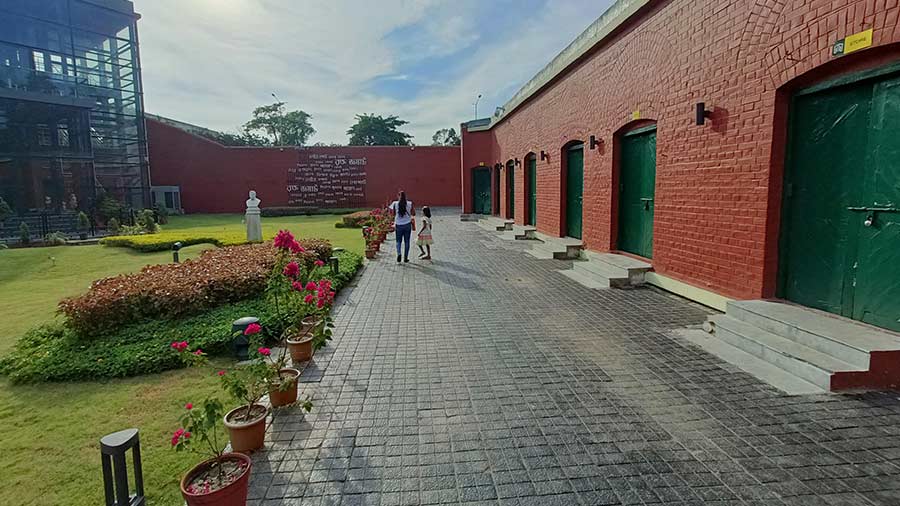Alipore Independence Museum, opened to visitors barely a month ago, can surely be on your must-visit list this winter. Whether you want to brush up on your knowledge about the British jail administration or the city’s role in the freedom movement, the experience is bound to leave you overwhelmed.
A few points to remember:
- The museum is open from noon to 6pm on all days of the week, except Mondays
- Photography and videography are free
- Visitors can park their two and four-wheelers at a paid parking lot adjacent the entrance
- Children 3 years and above require full tickets for museum entry and light & sound show
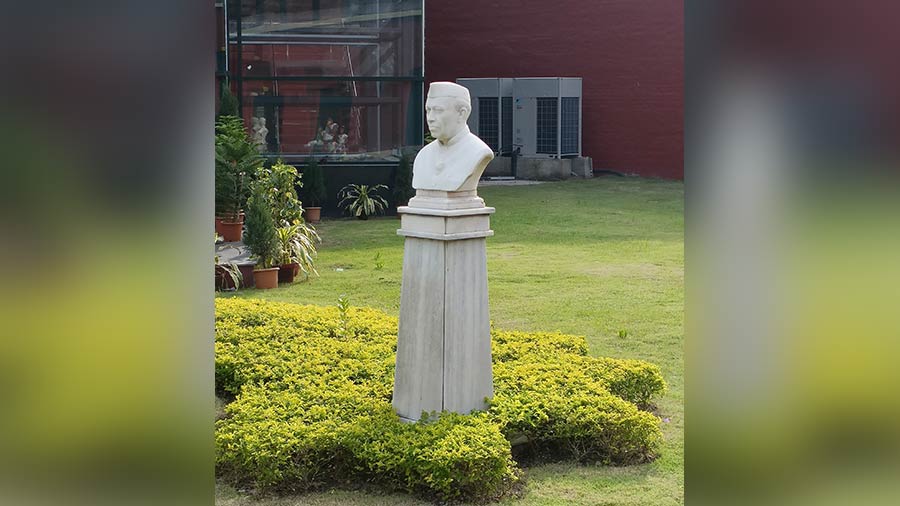
Once you buy the reasonably priced entry ticket of Rs 30 to get past the gates of the 116-year-old former Alipore central jail or Correctional Home, you will be greeted by a row of erstwhile jail storerooms adjacent to well-manicured lawns and crimson bougainvillaea. A bust of Jawaharlal Nehru adorns the centre.
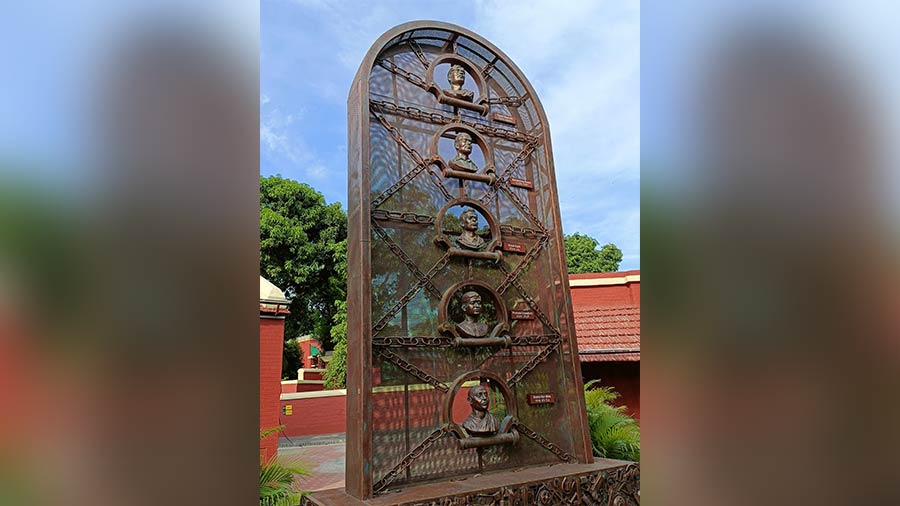
What catches your eyes next is a fantastic piece of iron art installation with miniature busts of five martyrs held together by shackles.

As you trudge along the modern-day cobbled pathway, the gallows come to your left. Step into the courtyard housing the detention room and the gallows and you are sure to get goosebumps when you spot the names of the 10 martyrs executed in the early 20th century. The Manila or hessian rope hung above the gallows and the trapdoor beneath are sure to send shivers down your spine.
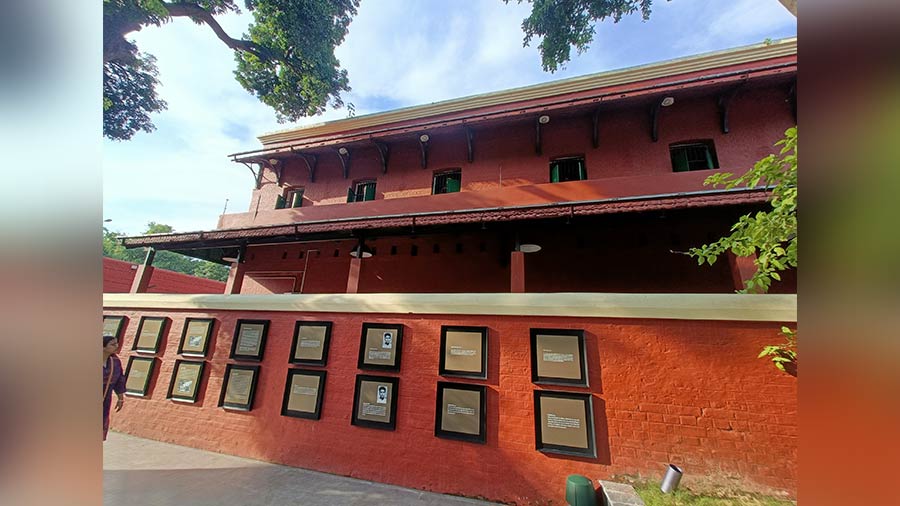
The martyrs’ wall detailing their brave deeds and periods of incarceration with some of the cells are situated at the back of the gallows.
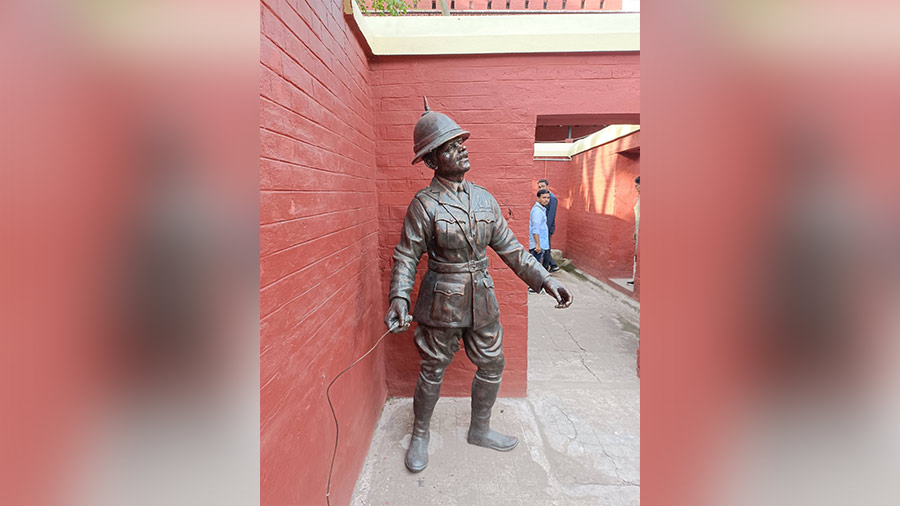
This British officer with a hunter in hand stands guard outside the detention cells, where the prisoners would be lodged temporarily before execution.

To get a real feel of the life of convicts, walk into a detention cell like this one comprising a concrete platform to lie down upon, a corner that serves as toilet and (inset) the cell’s locking system concealed in the wall.
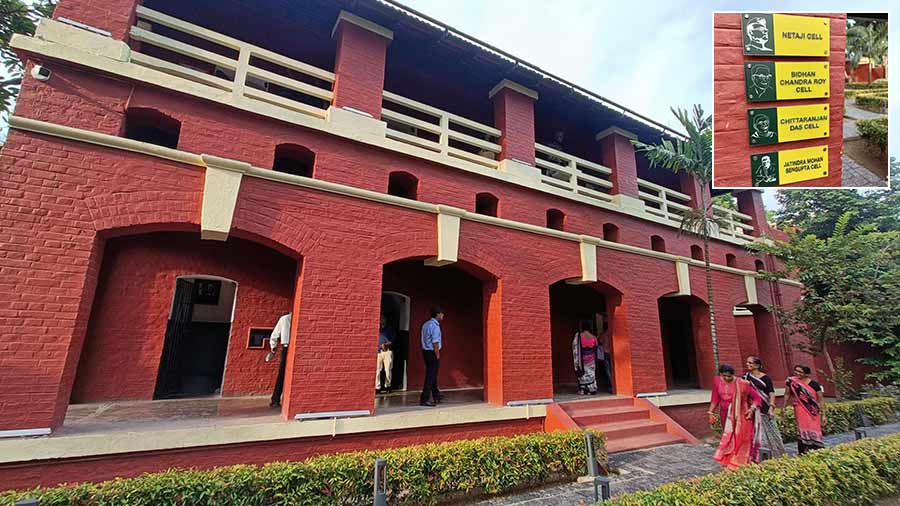
Just opposite the gallows stands a building at the entrance of which (inset) a bright yellow signboard lists four of Bengal’s brave sons who spent time in Alipore jail at different times.
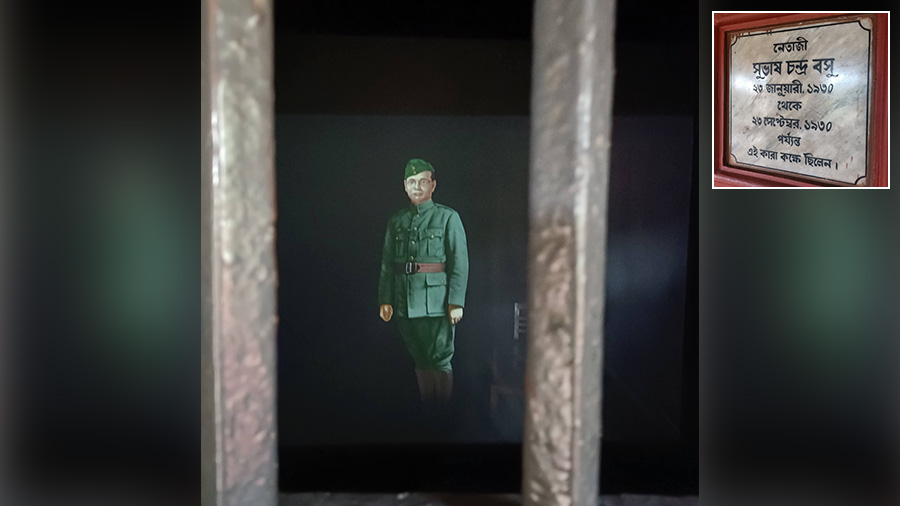
Once you climb up to the first floor of the building, Netaji Subhas Chandra Bose’s cell falls to your right. A laser image of the great leader is cast on a screen inside the cell, while his recorded speeches play on loop and (inset) the marble plaque gives the dates of his nine-month imprisonment in 1930.
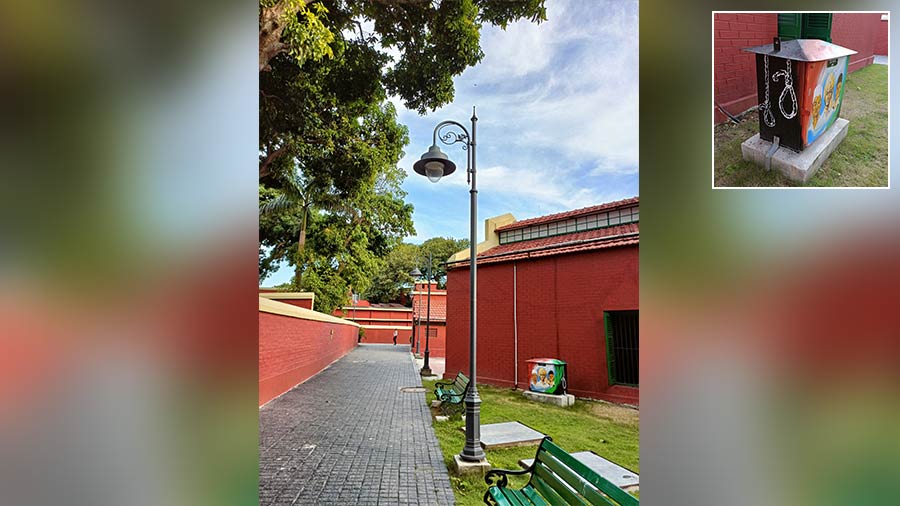
As you catch your breath on the green benches under the cast iron lamp posts resembling Kolkata’s heritage gas lights, (inset) a brightly painted electrical junction box with the image of the Rajguru-Sukhdev-Bhagat Singh triad from the Lahore conspiracy case will catch your eyes.
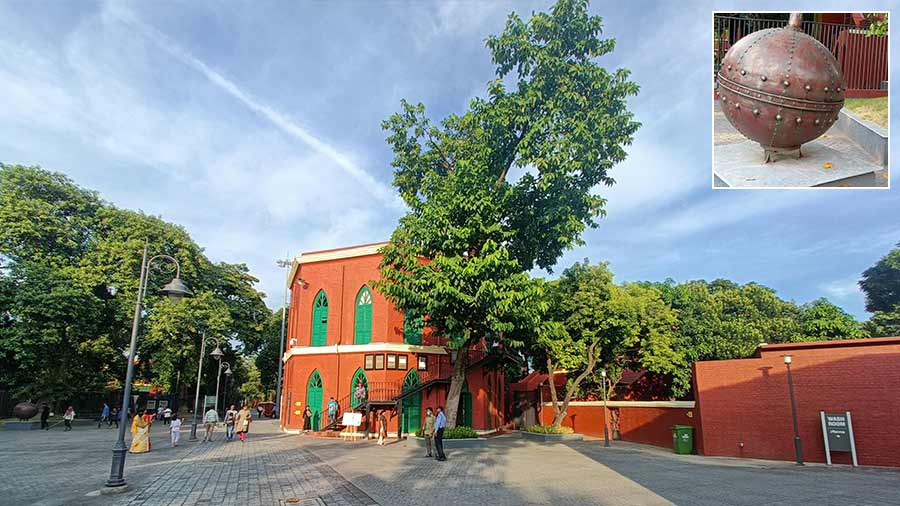
Soon you will reach a central courtyard with the watchtower, a hexagonal red-brick building with Gothic-style green windows and (inset) a larger-than-life copper prototype of the bomb used in the Manicktala bombing case is the centre of attraction and offers a photo-op
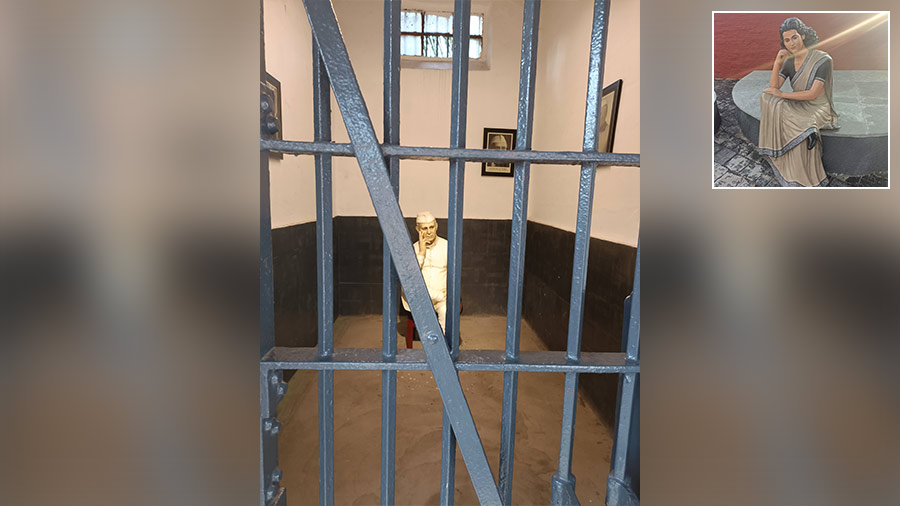
The cell that housed Jawaharlal Nehru is a must-see (inset) even as a life-sized statue of a young Indira sits in the courtyard outside as if waiting for her father.
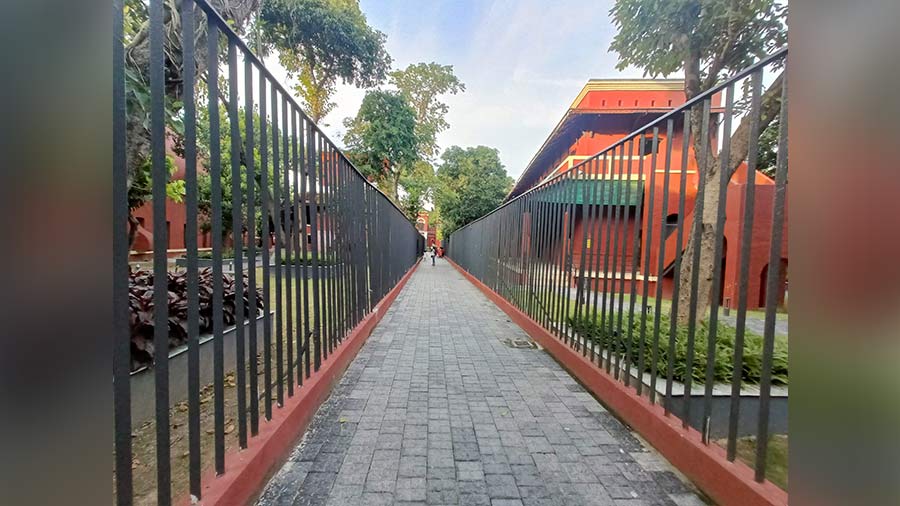
Next you proceed to the permanent exhibition halls housed in the erstwhile jail hospital building through a narrow, cobbled passage.
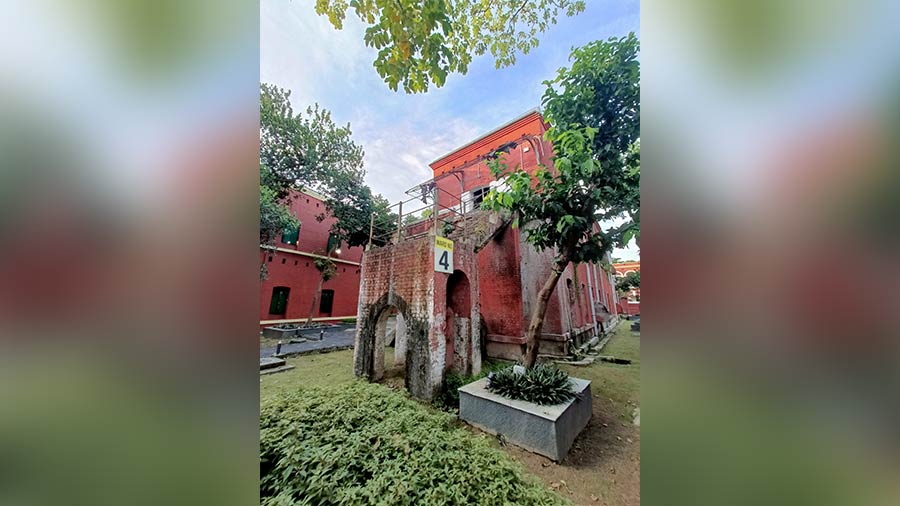
Suddenly, to the left, you catch a mould-covered building, Ward No. 4. A quick read of the signage tells you: “This General Ward building has been preserved to serve as a memory of the structure that was erected in the early decades of 20th century British India….It is assumed that third-class prisoners were kept on the floor. Second Class (less dangerous political) prisoners were kept in beds of cement, while high profile prisoners were kept in separate cells. European prisoners were held in different wards.”
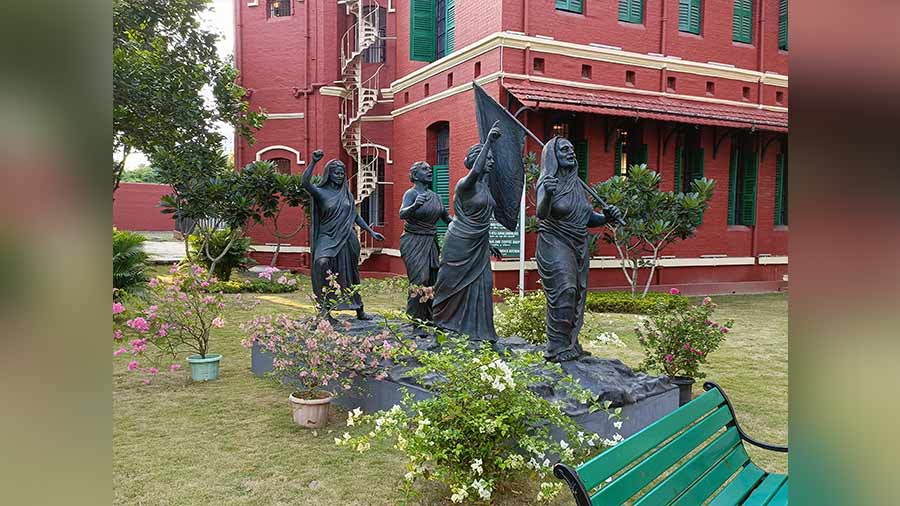
An outdoor installation depicting the women fighters of the freedom movement.

Larger-than-life replicas of commemorative coins featuring the brave sons and significant mass movements in India and (inset) one honouring Rabindranath Tagore on his 150th birth anniversary.
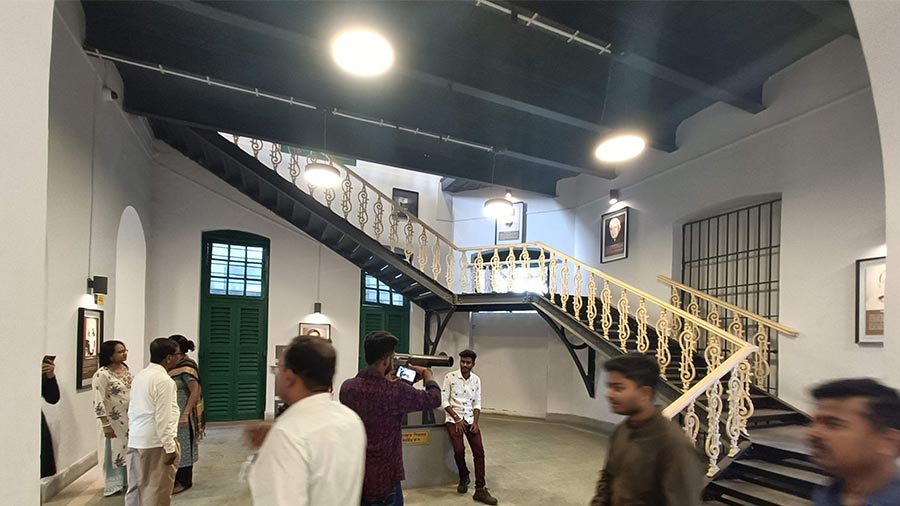
A grand rebuilt staircase leads to the permanent exhibition galleries of the erstwhile jail hospital building.
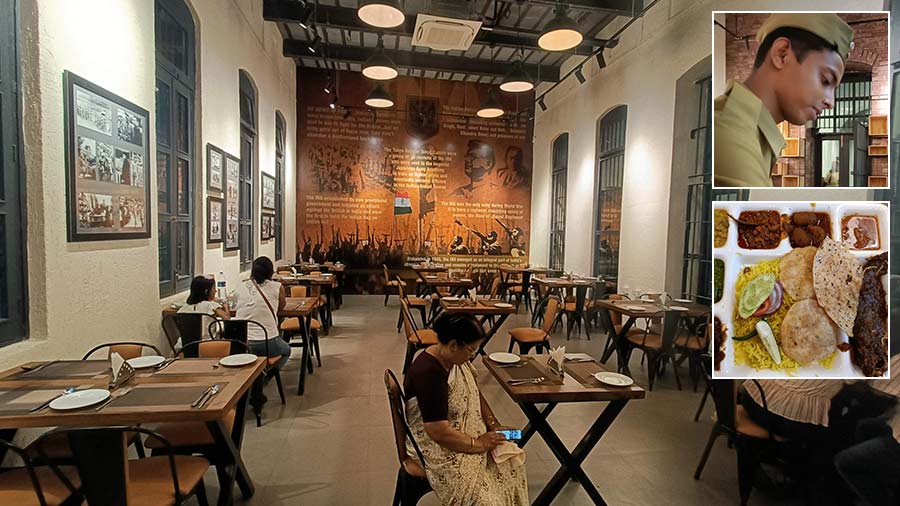
The 40-seater Ekante Independence Kitchen is themed on Netaji’s Indian National Army; (inset) waiters in INA uniform serve you the INA Special Platter, Sipahi Bidroh Platter (inset), Santhal Bidroh Platter and BBD Platter besides other dishes. The black-and-white INA photographs, the iron grilles on the tall windows, the British-era lampshades complete the look but in air-conditioned comfort

Among the various galleries all of which flaunt the original jail iron grille gates, the ones dedicated to Aurobindo Ghose and the women freedom fighters stand out with their life-sized exhibits, reprints of manuscripts in glass showcases and display boards giving details alongside images.
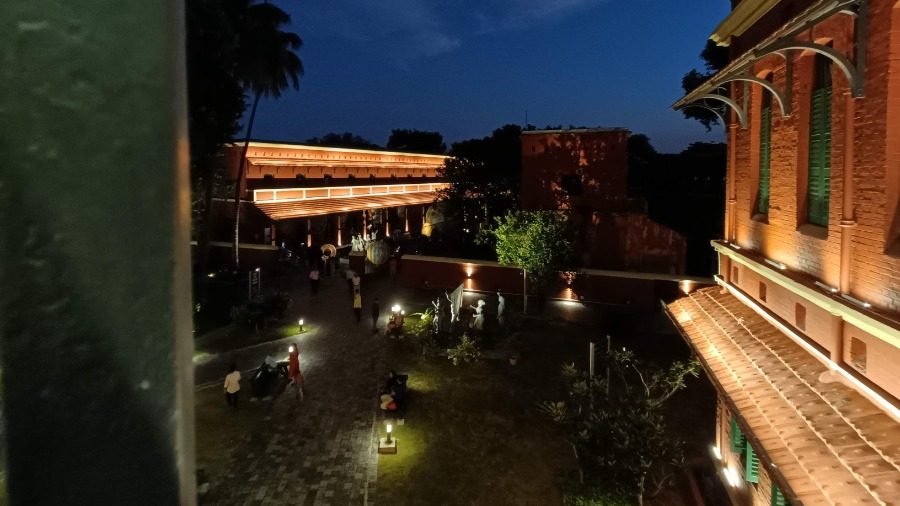
As dusk falls and the crowd thins, it’s time for the light-and-sound show (tickets at Rs 100 per person) scheduled at 6.30pm.

The spacious first-floor Coffee House near the entrance gate (inset) is good for a round of hot coffee and onion fritters. Seated beside the huge glass windows, you can peer out and catch a glimpse of the museum premises.
